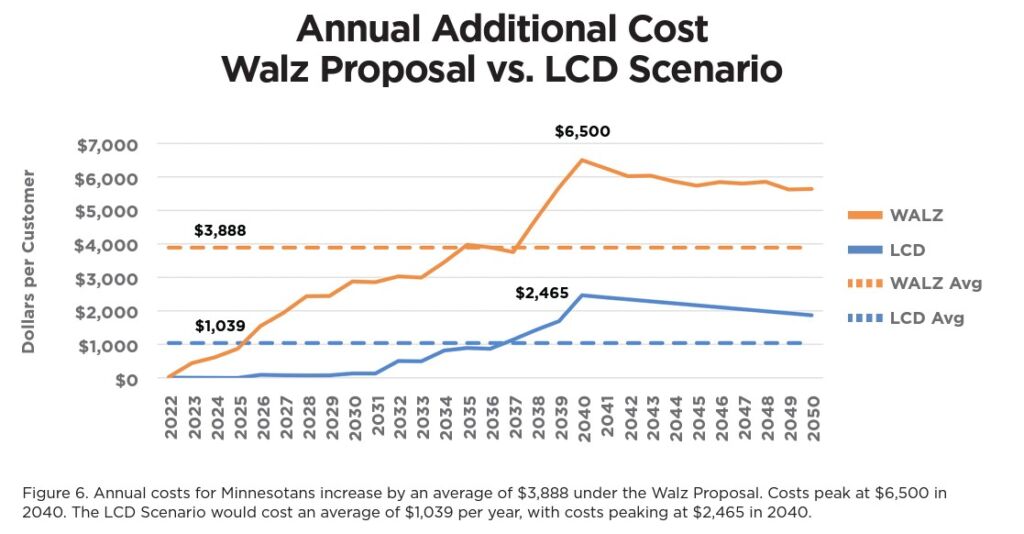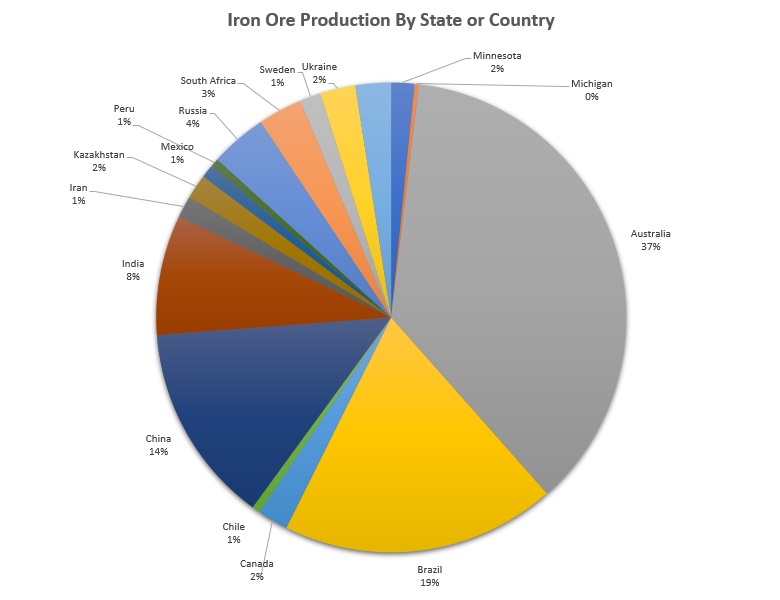Statewide View: Walz’s climate plan means massive energy costs for Minnesota
On Sept. 16, the administration of Minnesota Gov. Tim Walz released the final version of its Climate Action Framework, a document that lays out Walz’s vision for Minnesota’s energy future. Unfortunately, it appears Walz wants to enact a series of harmful California policies that would inflate energy costs for families and businesses in Northeastern Minnesota.
One California energy policy is reflected in the Walz administration’s desire to mandate that 100% of Minnesota’s electricity come from carbon-free energy sources by 2040. It is important to note that the Climate Action Framework does not allow large Canadian hydropower to qualify for this mandate, and it makes no mention of lifting Minnesota’s unscientific ban on building new nuclear power plants. This essentially makes the Walz proposal a wind, solar, and battery-storage mandate.
A new report from Center of the American Experiment modeled the cost of the Walz proposal and determined it would increase Minnesota’s energy expenses by $313 billion through 2050. This is the equivalent of each Minnesota electricity customer — families, businesses, and industrial users — paying an additional $3,888 every year through 2050.

Using the economic modeling software IMPLAN, American Experiment determined that skyrocketing electricity costs in the Walz proposal would kill nearly 79,000 jobs in Minnesota, and these jobs would almost certainly be concentrated in high-wage, energy-intensive industries like manufacturing, papermaking, and mining.
For example, Minnesota’s iron mining industry uses 600 megawatts of power every hour, which is enough power-plant capacity to electrify nearly 23% of all the homes in the state on an average hour.
Under the Walz proposal, electricity costs for iron mines would be 3.4 times higher than current expenses, increasing from $400 million in 2020 to $1.368 billion in 2040, an increase of $965 million. This is the equivalent of 10,490 high-paying mining jobs.
These massive price hikes would render Minnesota’s iron mining industry uncompetitive with mining firms in other nations, because while Minnesota produces more than 80% of America’s iron ore, we account for just 2% of global iron ore production.

Rising electricity prices would also make developing Minnesota’s world-class copper-nickel deposits cost-prohibitive, preempting the creation of more than 14,850 new jobs in the region.
The second California regulation Gov. Walz is seeking to enact is California’s low-carbon fuel standard. American Experiment’s March report, Gas Station Inflation, details how this policy would drive up the cost of gasoline and diesel fuel by 20 to 54 cents per gallon, which would force Minnesota families to pay an additional $210 to $568 at the pump.

After our report was published, liberal Minnesota lawmakers introduced legislation that would make complying with these California fuel standards even more extreme and more expensive. This new legislation would increase gasoline costs by up to $2 per gallon, which means that by 2040, the average Minnesota family using 1,053 gallons of gas would pay an additional $1,137 to $2,127 per year.
Despite the high costs of these programs, the Walz administration never admits that the climate impacts of these policies would be too small to measure, preventing a combined 0.001 degrees Celsius of future global warming by 2100, an amount too small to measure with the most sophisticated scientific equipment.
The moral of the story is that the California energy policies put forward by Gov. Walz in the Climate Action Framework would force Minnesotans to pay massive energy bills for immeasurably small environmental outcomes. Minnesotans need to know the costs and benefits of any proposed policy as we weigh our options for our energy future and decide for ourselves whether we want to pay California prices for energy.
Isaac Orr is a policy fellow specializing in energy and environmental policy at Center of the American Experiment (americanexperiment.org), a conservative public-policy think tank based in Golden Valley, Minnesota. He can be followed on Twitter: @thefrackingguy.
This article originally appeared in the Duluth News Tribune